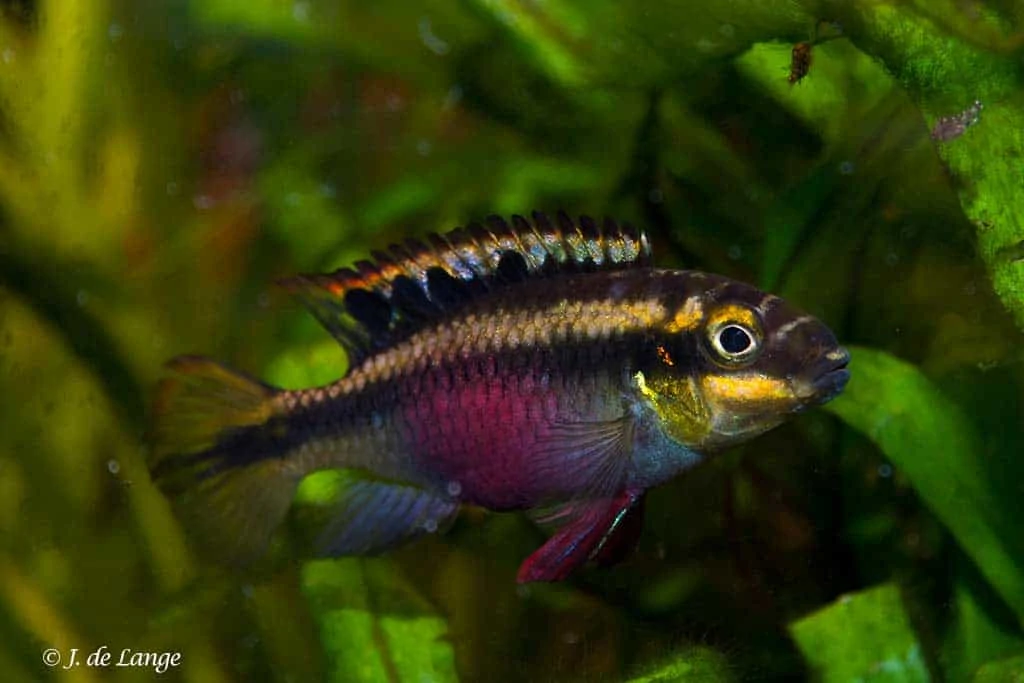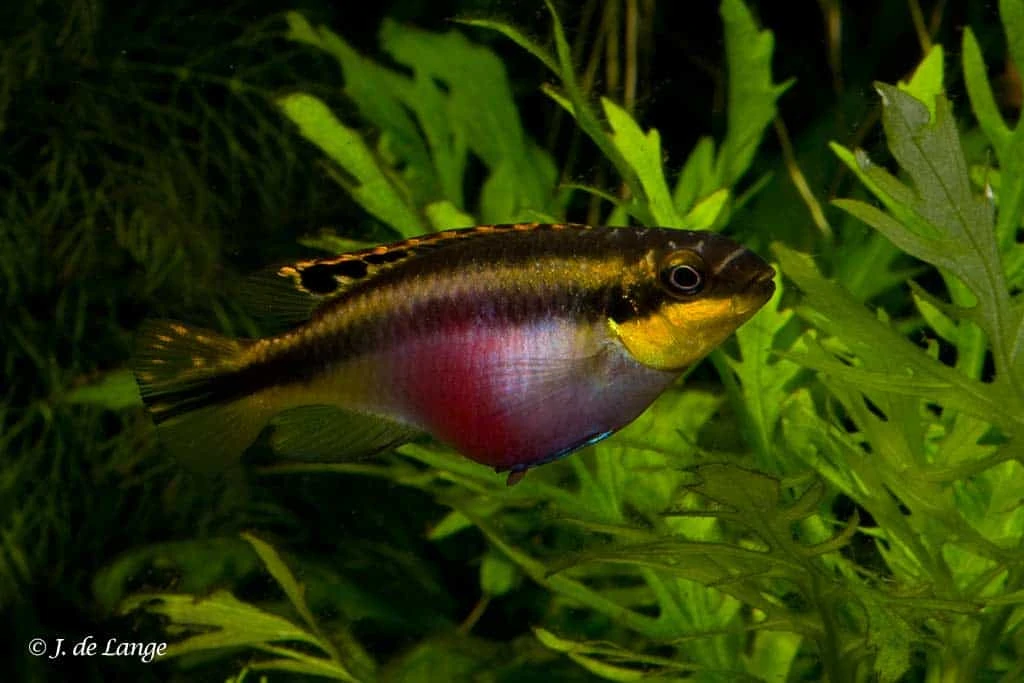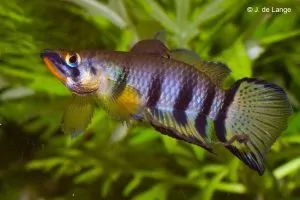Pelvicachromis pulcher – Kribensis
Pelvicachromis pulcher was described by Boulenger in 1901. The name “Pelvicachromis” can be divided into two parts: “Pelvica” is Latin for pelvis or belly and is combined with “chromis”, an old word for fish. Pulcher comes from Latin and means beautiful. Their common names are Kribensis or Rainbow Kribensis.
Synonyms
Pelvicachromis pulcher – Kribensis has seen many descriptions over the years. This has also created a number of synonyms: Pelmatochromis pulcher, Pelmatochromis aurocephalus, Pelmatochromis camerunensis, Pelmatochromis kribensis, Pelmatochromis pulcher kribensis, Pelmatochromis subocellatus kribensis.
Description
Pelvicachromis pulcher or better known as the Kribensis, Krib or Rainbow Krib is a species that is very suitable for beginners.
They make few demands on water parameters and can be kept in most community tanks. The males grow to a size of about 10 centimeters and the females are usually about 6 to 7 centimeters. The minimum size for the aquarium is 80 centimeters because Kribensis, like most cichlids, can be somewhat aggressive during the period when they have young. In an aquarium of 50 or 60 centimeters, the other fish cannot go far enough away to escape the attention of the watching male. Make the aquarium dark with dense plants, use driftwood, stones, flower pots, and half coconuts to make hiding places. Use a sandy bottom, some light current, and dim lighting.
The male can be recognized by its red-colored belly and strongly elongated fins. Its pectoral fins usually have a blue stripe. The tip of its tail also has different colors. A black horizontal stripe runs from the head to the tail, this can also be found in the dorsal fin, with a bit of orange-red in the tip. The female is smaller and has less flared fins. Her red/purple belly is slightly rounder than that of the male, the dorsal fin is smaller and yellower in color. She also has the black stripe from head to tail. The pelvic fins are usually also red/purple, sometimes yellowish.
Rainbow Kribs are peaceful fish except during mating season when they can be quite aggressive. Provide a harmonious couple where the male and female are the same size and where the female is ready for mating; if she is too small and she is not ready yet, she can be killed.
They search the sandy bottom for food and rinse their gills with the sand. They swim in the middle and lower layers of water.
Diet
In the wild, Pelvicachromis pulcher feeds on detritus (waste). This consists largely of vegetable waste and a small amount of animal waste. It is therefore an omnivore with an emphasis on plant based foods.
In the aquarium, you can feed them with flakes and granules for omnivorous cichlids.
Origin
Pelvicachromis pulcher originates from southern Nigeria and is also found along the coast of Cameroon.
Breeding Kribensis
The breeding of the Pelvicachromis pulcher starts with the female. As soon as she is ready to mate she shows her flank to the male and makes small vibrating movements. Her belly has also turned a bright red color. The eggs are preferably laid in a hole against the ceiling. If this den is not completely satisfactory, the couple will further excavate the den. A bottom of sand or fine gravel is therefore recommended. A nest can contain about 50 to 100 eggs. However, experienced females can produce up to 200 eggs.
The female fans the eggs inside the cave while the male defends the territory, which is about 60 centimeters in diameter. No other fish are allowed in here, an aquarium that is too small will not provide enough space for the other fish.
Raising the fry
Once the eggs have hatched, the young remain in the cave with the female for a few days. After about 3 days they have grown eyes and the parents make a pit in the bottom a little further in the aquarium where they move the young. For the night the couple moves the young back to the cave. The next day they move to another pit. After about 7 to 10 days, the young Kribensis are large enough to look for food on their own. You can then start feeding brine shrimp nauplii. In a community tank, there will usually be enough food floating around at the bottom. Everything they come across is eaten. In that respect, it really is an omnivore.
Video
Author
Coby – J. de Lange
Copyright images
J. de Lange





















Reviews
There are no reviews yet.